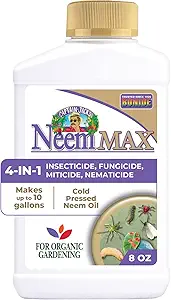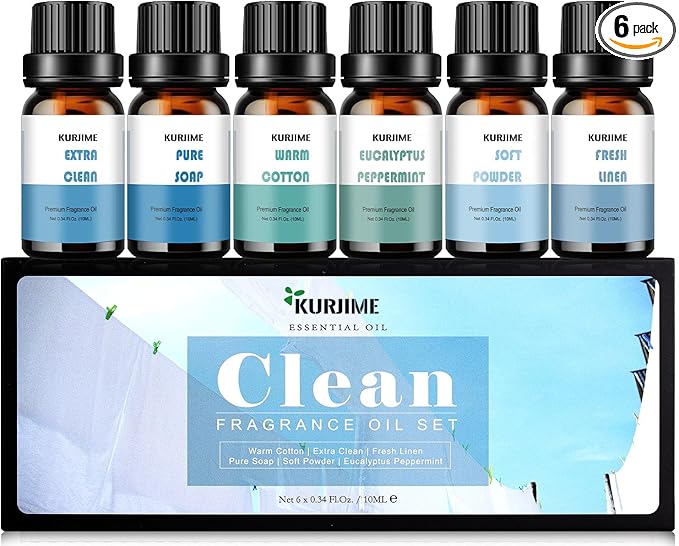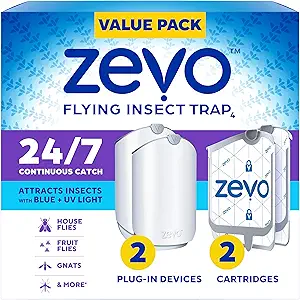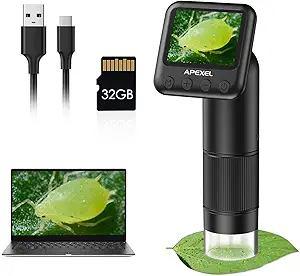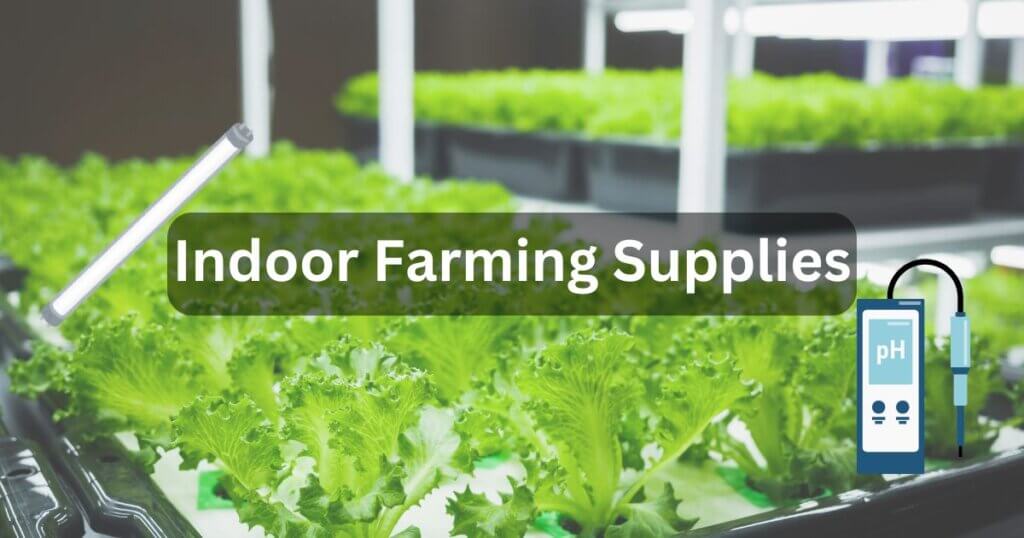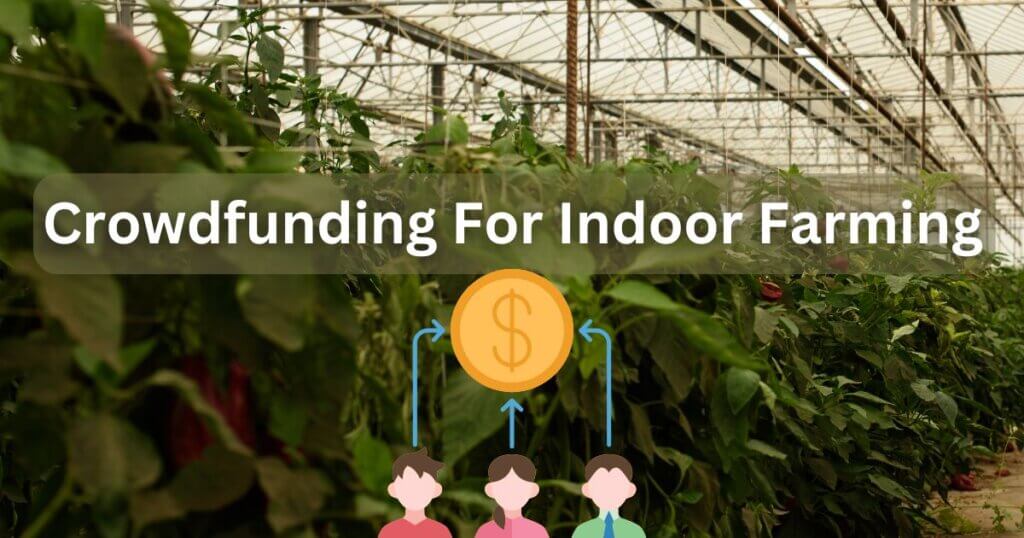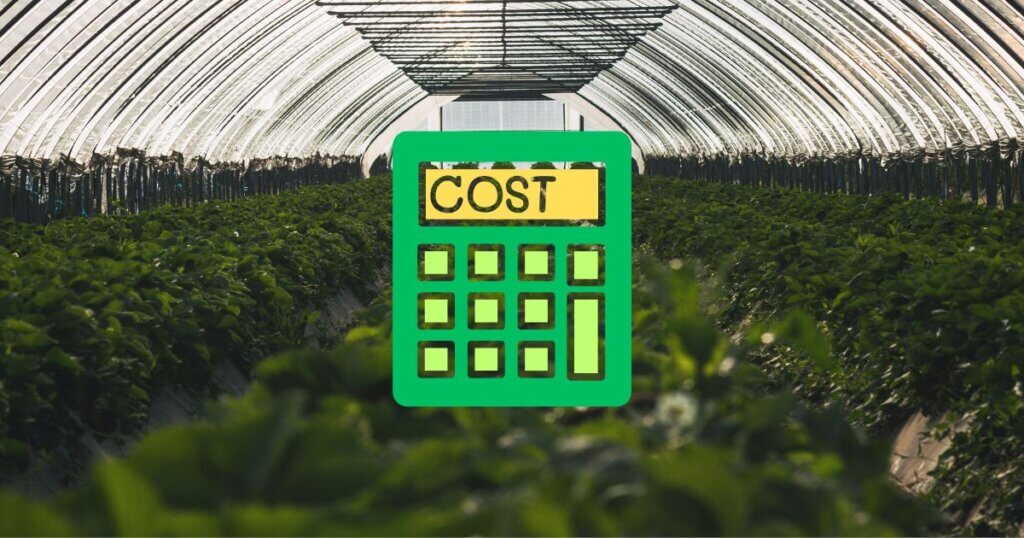Unstoppable Pest Control Methods for Indoor Farming That Actually Work
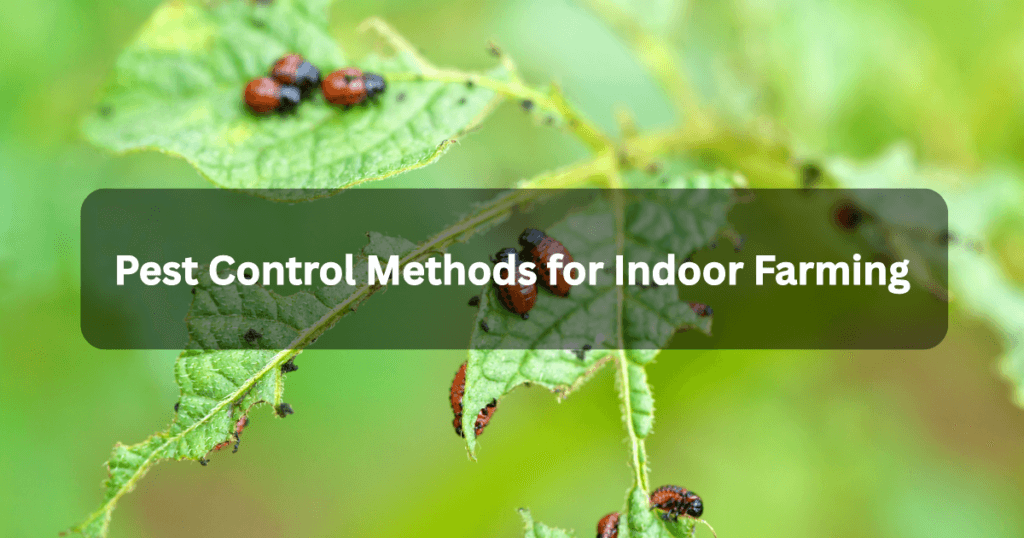
Some of the links in this post are affiliate links. As an Amazon Associate, we earn a referral fee from qualifying purchases—at no extra cost to you.
Indoor farming is booming. Whether it’s a vertical hydroponic setup in an urban warehouse or a high-tech greenhouse, growers are finding ways to produce fresh food year-round. But there’s a not-so-tiny villain threatening the success of these operations—pests. Yep, even in the most controlled environments, these little invaders can wreak havoc.
So, what’s the secret to keeping them at bay?
You’re about to discover the most effective pest control methods for indoor farming that won’t just work—they’ll transform how you grow. This guide isn’t just a bunch of tips; it’s a deep dive into battle-tested, science-backed, and eco-friendly strategies to protect your crops without compromising on yield or safety.
Table of Contents
Understanding the Pest Problem in Indoor Farming
Indoor farming might seem pest-proof, but it’s actually not immune to infestations. The same stable, climate-controlled environments that help plants thrive can also create ideal conditions for pests to multiply. Without natural predators, even a small problem can escalate quickly. That’s why proactive pest management is essential, even in high-tech indoor systems.
Common Indoor Farming Pests
Let’s call out the usual suspects:
- Aphids: These sap-suckers multiply like wildfire.
- Whiteflies: Tiny, winged troublemakers that cause big damage.
- Spider Mites: Nearly invisible, yet deadly to foliage.
- Fungus Gnats: Their larvae munch on roots, and that’s bad news.
- Thrips: Small, slender bugs that leave behind silvery streaks on leaves.
Each pest brings its own set of challenges, but one thing they all share? They thrive in confined, warm, humid spaces—just like indoor farms.
Why Pests Thrive Indoors
There are no natural predators. Conditions are stable. And plants are always available. It’s like giving pests an all-you-can-eat buffet in a 5-star resort. Unlike outdoor fields, indoor farms don’t benefit from weather fluctuations or hungry birds. That’s why proactive strategies are absolutely crucial.
The Impact of Pests on Indoor Crops
Even a small infestation can snowball fast.
Crop Damage and Yield Reduction
Pests attack:
- Leaves – leading to reduced photosynthesis.
- Stems and roots – weakening plant structure.
- Fruits and flowers – affecting quality and market value.
The end result? Your harvest can take a nosedive.
Economic and Operational Consequences
Let’s not forget the dollars and cents. Infestations lead to:
- Lost revenue
- Wasted inputs (like water and nutrients)
- Reputational risks if your produce doesn’t meet quality standards
And fixing pest issues late is always more expensive than preventing them early.
Principles of Effective Indoor Pest Management
Before jumping into solutions, let’s talk strategy.
Integrated Pest Management (IPM)
IPM is the gold standard. It’s not just a method—it’s a mindset.
Here’s how it works:
- Monitor regularly
- Identify accurately
- Prevent whenever possible
- Use a combination of biological, mechanical, and chemical controls
It’s all about balance—not blasting pests with chemicals.
Prevention Over Cure
Think of pest control like dental care: regular monitoring is like brushing, preventive measures are like flossing, and if you skip both, you might end up needing a “root canal” in the form of harsh pesticides. Just like with teeth, a little daily attention goes a long way toward avoiding bigger problems down the line. Prevention is not only more effective but also safer for plants, people, and the environment. In indoor farming, smart, consistent care keeps your crops healthy and pest-free.
Natural Pest Control Methods for Indoor Farming
Nature has its own way of keeping pests in check. Let’s tap into it.
Beneficial Insects and Biological Controls
You can fight bugs with bugs. Here are some of your allies:
- Ladybugs: Aphid assassins
- Predatory Mites: Spider mite hunters
- Parasitic Wasps: Lay eggs in pests, killing them from the inside
- Nematodes: Tiny worms that attack larvae
These natural predators don’t harm your plants and can often handle outbreaks better than chemicals.
Microbial Pesticides and Biocontrol Agents
Forget synthetic sprays. Microbes like Bacillus thuringiensis (Bt) and Beauveria bassiana attack pests without harming humans or beneficial insects.
They’re especially great for fungus gnats, caterpillars, and beetles.
Organic Pest Control Solutions That Are Safe and Effective
Not into bugs fighting bugs? No problem. Organic solutions still pack a punch.
Neem Oil and Insecticidal Soaps
Neem oil disrupts pest hormones and makes leaves less tasty. Insecticidal soaps strip pests’ protective coatings, causing them to dehydrate.
Use them with:
- Low light
- Good airflow
- Consistent intervals
They’re gentle on your plants, but lethal to soft-bodied pests.
Bonide Ready-to-Use Neem Oil Spray – 32 oz is a powerful, plant-safe solution for controlling a wide variety of indoor pests. It disrupts insect hormone cycles while remaining OMRI-listed for organic gardening.
Essential Oils and Natural Repellents
Mother Nature’s scents can repel pests just like citronella keeps mosquitoes away.
Try:
- Peppermint Oil – For aphids and mites
- Clove Oil – For larvae and beetles
- Rosemary Oil – Effective against a wide range of bugs
These are easy to mix into sprays and safe for both plants and people.
Essential Oils Set – 6-Pack includes peppermint, rosemary, clove, and more—ideal for creating natural pest-repelling sprays. These 100% pure, therapeutic-grade oils support chemical-free indoor farming.
Physical and Mechanical Pest Control Strategies
Sometimes the best tools don’t come in bottles.
Sticky Traps and Barriers
Bright yellow or blue sticky traps attract flying pests like fungus gnats and whiteflies. Place them:
- Near vents
- Around plants
- Close to entrances
Physical barriers like insect netting and reflective mulches can prevent pests from getting comfy.
Gideal Yellow Sticky Traps – 20 Pack help monitor and control flying pests like fungus gnats, whiteflies, and aphids. These non-toxic, easy-to-use traps can be placed near plants or vents for effective pest management in indoor farms.
Environmental Controls
Small tweaks in your grow room can create big pest headaches.
- Lower humidity to stop fungus gnats and molds
- Adjust temperatures to disrupt pest breeding cycles
- Increase airflow to discourage soft-bodied insects
Light cycles can also be manipulated to reduce pest reproduction.
Advanced Technological Methods for Pest Control
Welcome to the future of pest control.
AI and IoT in Pest Detection
Smart sensors can:
- Detect movement
- Monitor air quality
- Alert you when pest numbers spike
These tools use machine learning to help farmers act before pests take over.
UV Light and Electromagnetic Devices
UV bug zappers aren’t just useful outdoors—they’re effective tools inside indoor farms as well, quietly attracting and eliminating flying pests without chemicals. Their discreet operation makes them ideal for maintaining a clean, controlled environment. Some advanced setups even use electromagnetic wave-based deterrents that interfere with insect behavior, confusing them and disrupting their mating cycles. These high-tech solutions offer non-invasive, sustainable ways to manage pests without harming crops or the ecosystem.
The Zevo 2 Flying Insect Traps & 2 Cartridges silently attracts and eliminates flying pests like gnats and whiteflies without chemicals. Its sleek, low-maintenance design makes it perfect for continuous protection in grow spaces.
Chemical Pest Control in Indoor Farming: Pros and Cons
Sometimes, you need to bring out the big guns—but carefully.
Safe Usage of Pesticides in Controlled Environments
If you go this route, choose:
- Low-residue pesticides
- Target-specific sprays
- Spot treatments over full applications
Always rotate chemical classes to avoid pest resistance.
Regulatory Guidelines and Compliance
To ensure clean and compliant produce, always follow your region’s organic standards and pesticide residue limits carefully. If you’re aiming for certifications, it’s essential to document every treatment, input, and process along the way. Detailed records not only support transparency but also make audits and inspections smoother. Ultimately, clean harvests start with smart, consistent compliance practices that protect both your crops and your credibility.
Creating a Pest-Resilient Indoor Farm Design
Think beyond sprays—your layout matters too.
Layout Optimization to Prevent Infestations
Separate spaces into zones:
- Propagation zone
- Veg zone
- Harvesting area
Add airlocks, screened vents, and sanitation stations to keep pests out from the start.
Importance of Cleanliness and Hygiene Protocols
You wouldn’t cook in a dirty kitchen, right? So don’t grow in one.
- Sanitize tools and trays
- Remove dead plant matter
- Mop floors and disinfect surfaces regularly
Set schedules and stick to them.
Monitoring and Early Detection Techniques
Knowledge is power—especially in pest control.
Scouting Methods and Pest Identification
Train your team to inspect:
- Undersides of leaves
- Soil surfaces
- Drainage zones
Use hand lenses or digital microscopes to ID pests early.
The APEXEL 800X Handheld Digital Microscope offers magnification from 50x to 1000x and connects to your smartphone for easy scouting. Ideal for early pest detection and accurate identification in indoor grow environments.
Data Logging and Trend Analysis
Track what’s happening weekly:
- Pest type and count
- Affected zones
- Treatment responses
Over time, you’ll predict outbreaks and stop them in their tracks.
Training Your Indoor Farming Team in Pest Management
No strategy works without buy-in from your crew.
Building Awareness and Knowledge
Hold short workshops or send out tip sheets. Keep the conversation going.
Put up signs that remind staff:
- Where to sanitize
- What to report
- How to scout properly
Establishing Standard Operating Procedures
Every employee should know:
- What to do when pests are spotted
- Who to tell
- How to document it
Clear, repeatable steps prevent chaos and ensure fast action.
Conclusion
Let’s face it—pests are a persistent challenge, even in indoor farming. But with the right pest control strategies, you can prevent infestations before they impact your crops or profits. Use a combination of natural remedies and smart technology, train your team to recognize early signs, and design your growing space with prevention in mind. A proactive, layered approach turns your farm into a fortress—resilient, productive, and protected.
Indoor farming offers precision and control—don’t let bugs be the exception.
FAQs – Pest Control Methods For Indoor Farming
1. What role does lighting play in attracting or deterring pests in indoor farms?
High-intensity and certain light spectrums (like blue or UV light) can attract pests such as whiteflies and fungus gnats. On the other hand, red-spectrum lights may deter some insect activity. Understanding the relationship between lighting types and pest behavior helps design pest-resistant environments.
2. How can crop rotation or diversity reduce pest outbreaks indoors?
Even in indoor systems, continuously growing the same crop can encourage specific pests to thrive. Integrating crop diversity or rotating plant types can break pest life cycles and reduce the risk of species-specific infestations.
3. Are there specific grow media that are more pest-resistant than others?
Yes. Coco coir and perlite-based media tend to drain well and discourage fungus gnats, while soil-based or overly moist substrates can become breeding grounds for pests. Choosing the right medium can significantly reduce pest pressures.
4. How do human behaviors and movement within the farm contribute to pest spread?
Workers can unknowingly carry pests on clothing, tools, or trays from one zone to another. Poor sanitation or moving between zones without changing gloves or disinfecting equipment can lead to widespread infestations.
5. Can companion planting be used in indoor farms to deter pests?
Absolutely. Plants like basil, marigold, or mint emit scents that repel aphids, whiteflies, and other common pests. When strategically interplanted, these natural deterrents can reduce pest activity without chemicals.
Other Useful Resources Related To Pest Control Methods For Indoor Farming
Implementing Sustainable Biological Pest Control in Hydroponic Farming
This article explores the use of natural predators and microbial agents in hydroponic systems to manage pests without harmful chemicals, highlighting benefits such as reduced environmental impact and cost-effectiveness.
https://kryzen.com/implementing-sustainable-biological-pest-control-in-hydroponic-farming/
Vertical Farming Pest and Disease Management
This resource discusses Integrated Pest Management (IPM) strategies in vertical farming, including cultural, physical, biological, and chemical controls, emphasizing the importance of monitoring and prevention.
https://green.org/2024/01/30/vertical-farming-pest-and-disease-management/
Effective Pest Control Solutions for Indoor Growers: Proven Strategies That Work
This guide provides practical pest control solutions for indoor growers, covering biological controls like beneficial insects, organic options such as neem oil and diatomaceous earth, and the use of insecticidal soaps.
https://growcycle.com/learn/effective-pest-control-solutions-for-indoor-growers-proven-strategies-that-work
Organic Pest Control for Vertical Farms | UNS Farms Tips
This article offers organic pest control tips for vertical farms, focusing on natural methods like neem oil applications, sticky traps, and maintaining cleanliness to prevent pest infestations.
https://unsfarms.com/blog/post/keep-your-vertical-farm-pest-free-organic-pest-control-tips-from-uns-farms
How to Manage Pests and Diseases in Your Indoor Vegetable Garden
This resource provides strategies for managing pests and diseases in indoor vegetable gardens, including preventive measures, optimal gardening conditions, and natural deterrents like companion planting and beneficial insects.
https://farmingaide.com/indoor-vegetable-garden-pest-and-disease-management/
